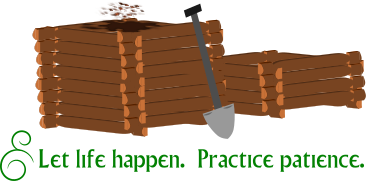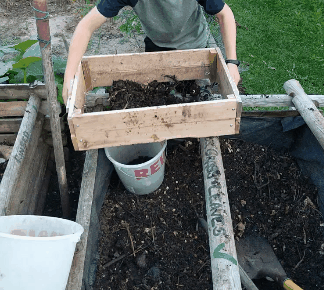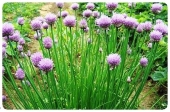
 5
5




 10
10




| I can’t: | I can: |
|---|---|
| 1. Control what others, especially small children, put into the bin. | |
| 2. Change the weather, making it drier or warmer, etc. | |
| 3. Command the microbes to do their happy dance to heat up the piles. | |
| 4. Make stinky, compacted anaerobic bins break down quickly like the aerobic bins do. | |
| 5. Force the materials in the bin to break down uniformly into beautiful Insta-picture-worthy consistency. | |
| 6. Make people deposit materials with a proper C:N ratio. | |
| 7. Force urban “fauna” to GO AWAY. | |
| 8. Learn everything one needs to know about our compost system in just a few years. | |
| 9. Sustain an urban composting system all on my own. | |
| 10. Get down on myself over the many things beyond our control in a low cost, volunteer-run urban compost system. | Have fun and be patient: |

 7
7




Castaway Compost - Yer Trash be Treasure! castawaycompost.com
 4
4








Invasive plants are Earth's way of insisting we notice her medicines. Stephen Herrod Buhner
Everyone learns what works by learning what doesn't work. Stephen Herrod Buhner
 1
1




 2
2




Keith Odell wrote:YOU!
Sounds like you are doing a fantastic job.
Keep up the good work, follow your "can's and cant's" and pat yourself on the back occasionally.
 1
1




George said All this, unfortunately, makes for a lot to think about, especially for such a small and modest thing as a sign!
Invasive plants are Earth's way of insisting we notice her medicines. Stephen Herrod Buhner
Everyone learns what works by learning what doesn't work. Stephen Herrod Buhner
 6
6




 3
3









Works at a residential alternative high school in the Himalayas SECMOL.org . "Back home" is Cape Cod, E Coast USA.
 1
1













 2
2




George Yacus wrote:Can we go to the COMPOST BINS!?"




bruce Fine wrote:just wondering
how's the worm production? might be ideal spot to incorporate a worm casing bed area ?
 as I can't monitor what goes into them. It occurred to me that I could use the plastic bins as "weeds only" cold compost bins, and then simply plant things at their base. That way:
as I can't monitor what goes into them. It occurred to me that I could use the plastic bins as "weeds only" cold compost bins, and then simply plant things at their base. That way:

|
That new kid is a freak. Show him this tiny ad:
Permaculture Design Magazine
https://permies.com/wiki/237407/permaculture/Permaculture-Design-Magazine
|







